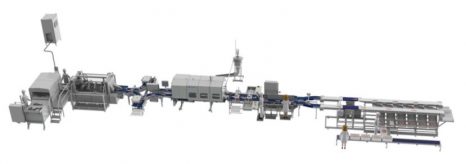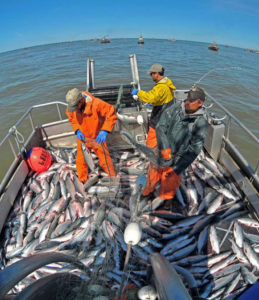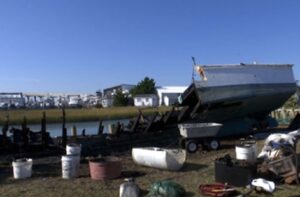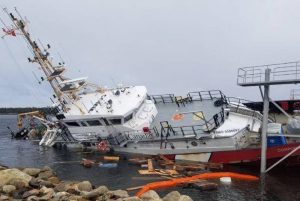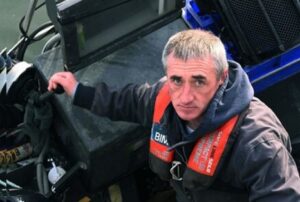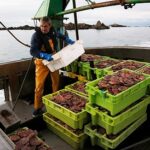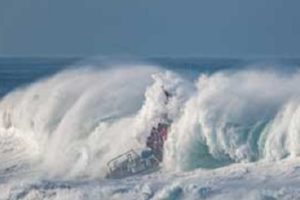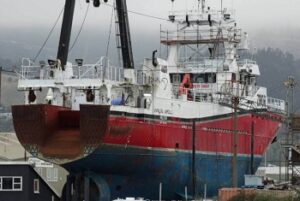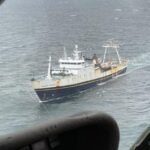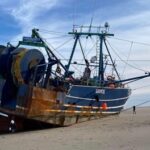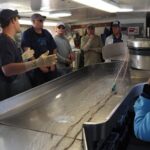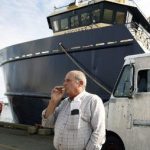Tag Archives: Gunnar Knapp
Fishermen and community leaders react to Trident announcement to sell a third of its Alaska plants
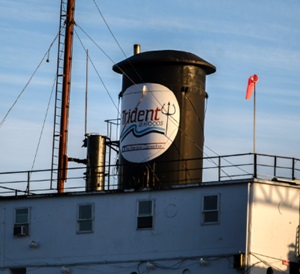 Gerry Cobban Knagin is a commercial fisherman. She and her family have fished around Kodiak and sold their harvest to Trident Seafoods, one of the largest seafood processors in the country, on and off for decades. But on Dec. 12, the company announced it’s selling off about a third of its Alaska processing plants, including their year-round facility in Kodiak. She said the announcement was a huge shock for almost everyone on the island. “Speaking with [Trident] management, there wasn’t any heads up for anyone,” Knagin said. “And they decided, according to management, that they wanted full transparency so that the fleet would know.” Photos, more, >>click to read<< 20:44
Gerry Cobban Knagin is a commercial fisherman. She and her family have fished around Kodiak and sold their harvest to Trident Seafoods, one of the largest seafood processors in the country, on and off for decades. But on Dec. 12, the company announced it’s selling off about a third of its Alaska processing plants, including their year-round facility in Kodiak. She said the announcement was a huge shock for almost everyone on the island. “Speaking with [Trident] management, there wasn’t any heads up for anyone,” Knagin said. “And they decided, according to management, that they wanted full transparency so that the fleet would know.” Photos, more, >>click to read<< 20:44

“Let’s hope this is one hell of an anomaly,” – Pandemic throws a wrench in salmon market
“If you want to categorize the bad news, the biggest factors are the sheer operating logistics for this industry in dealing with this virus, and keeping the workers safe,” he explains. “That’s one huge complexity. The second is the drastic drop-off in restaurant consumption, and the third is the drastic decline in people’s incomes. Those are the three major hits.” In a normal year, most of the uncertainty in the salmon market comes from the run itself; how the harvest compares to the previous year and how processors will keep up. >click to read< 08:49
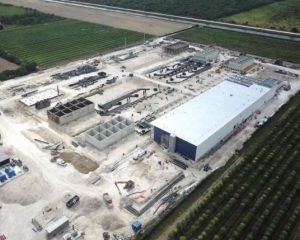
Tomorrow’s fishery
While fisheries biologists in the north are hard at work crunching numbers in an effort to develop their best guess at how many salmon will return to Alaska next year, Atlantic Sapphire is getting ready to load it first 800,000 salmon eggs into a massive, onshore “Bluehouse” in Florida. A “successful 90-day, on site hatchery trial has validated water quality and local conditions,” the Norwegian company said in a report to shareholders in mid-November.,,, The implications for Alaska commercial salmon fisheries are significant, but those who suggest the growing competition warrants some serious discussion as to how the 49th state retains value in its salmon resources are generally vilified as commercial fishery haters. >click to read<12:27

Stormy horizons – Salmon farms
Good news for Alaska commercial fishermen: Salmon last year ranked as the favorite fish at Japanese conveyor-belt sushi restaurants for the sixth year in a row, according to a survey by seafood processor Maruha Nichiro. Bad news for Alaska fishermen: “Ninety percent of that salmon is imported from Chile and Norway, but its popularity is now spurring domestic fish farming,” Nikkei Asian Review reported earlier this month. The report of Japanese domestic fishing farming might be the worst news of all. >click to read<09:02
Untouched salmon
The future of commercial salmon processing will go online in Norway later this year when the machines take over a plant just north of the Arctic Circle. If the operation proves successful – and there is every indication it will – Alaska should get ready to see yet another radical change in the labor-intensive business that helped shape the territory and fire the push for Statehood in the 1950s. click here to read the story 09:25
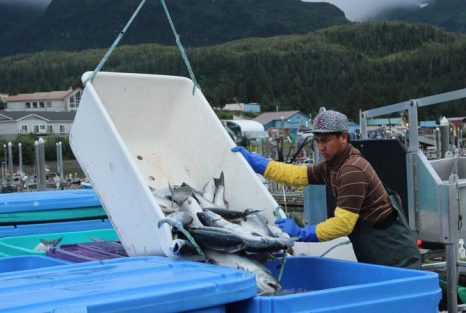
Instead of fighting global competition, Alaska’s salmon industry is (reluctantly) embracing it
Forty years ago, Alaska had a near monopoly on supplying the world with salmon. But then Norwegian fishermen began experimenting with salmon farming — raising fish in enclosed ocean pens. By the 1990s, international salmon farming had taken off, not just in Norway, but also in Canada, Scotland and Chile. As global supplies skyrocketed, Alaskan salmon prices plummeted. “In 1988, the price for Sockeye salmon in Alaska was well over $2 a pound. By about 2000, the price had fallen to 40 cents a pound,” says Gunnar Knapp, an economist and fisheries expert with the University of Alaska, Anchorage. click here to read the story 07:05






